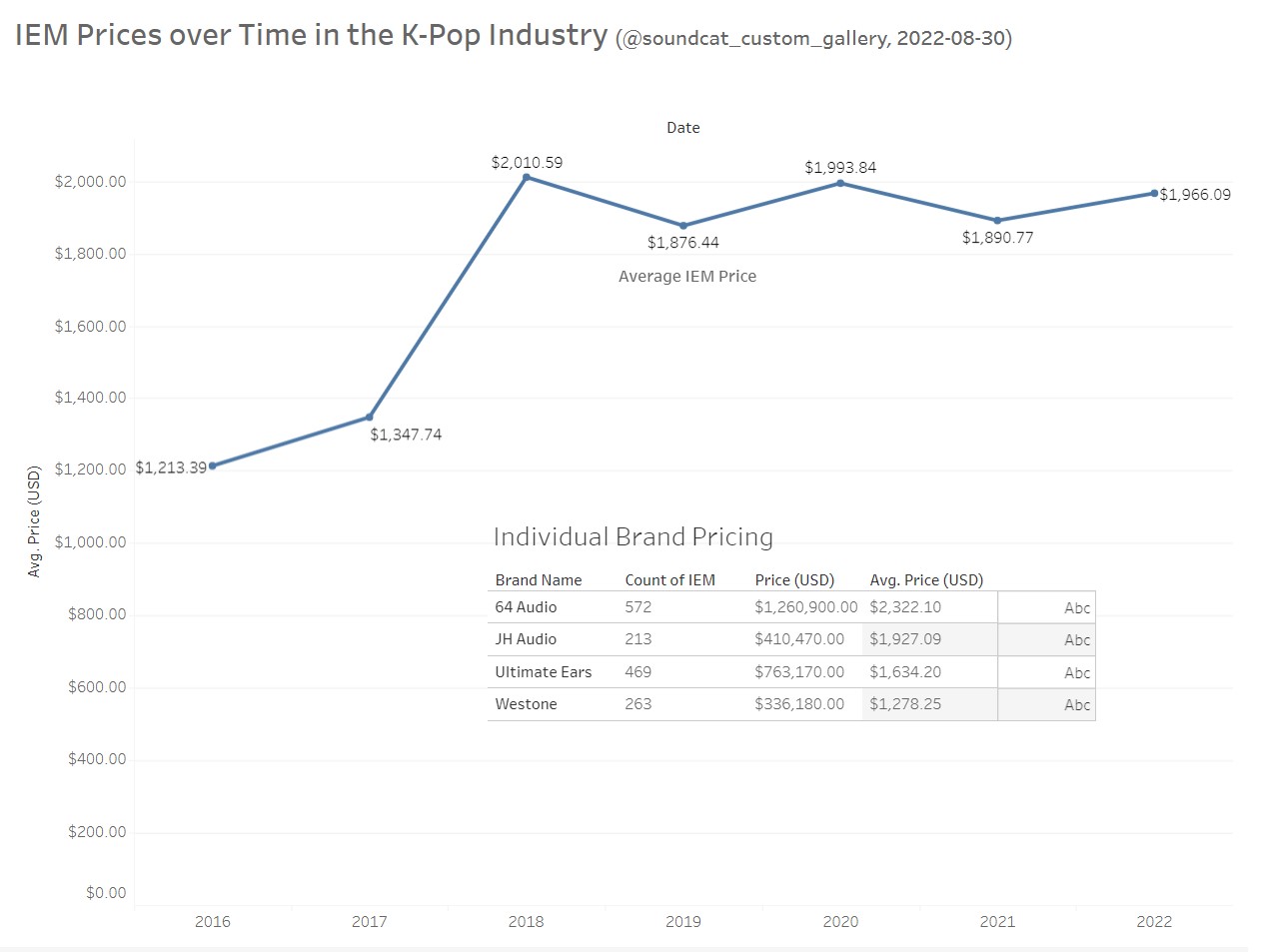Hey everyone, I thought this might be of interest here...
https://headphones.com/community/re...-dive-into-the-world-of-k-pop-in-ear-monitors
SoundCat is the predominant retailer for South Korean artists' CIEMs. Their Instagram page presents a prime data source for what would otherwise be (and still is to some extent) a nebulous analysis of South Korea's CIEM market. So I took a stab at it for fun, and these are some of the results



https://headphones.com/community/re...-dive-into-the-world-of-k-pop-in-ear-monitors
SoundCat is the predominant retailer for South Korean artists' CIEMs. Their Instagram page presents a prime data source for what would otherwise be (and still is to some extent) a nebulous analysis of South Korea's CIEM market. So I took a stab at it for fun, and these are some of the results


































